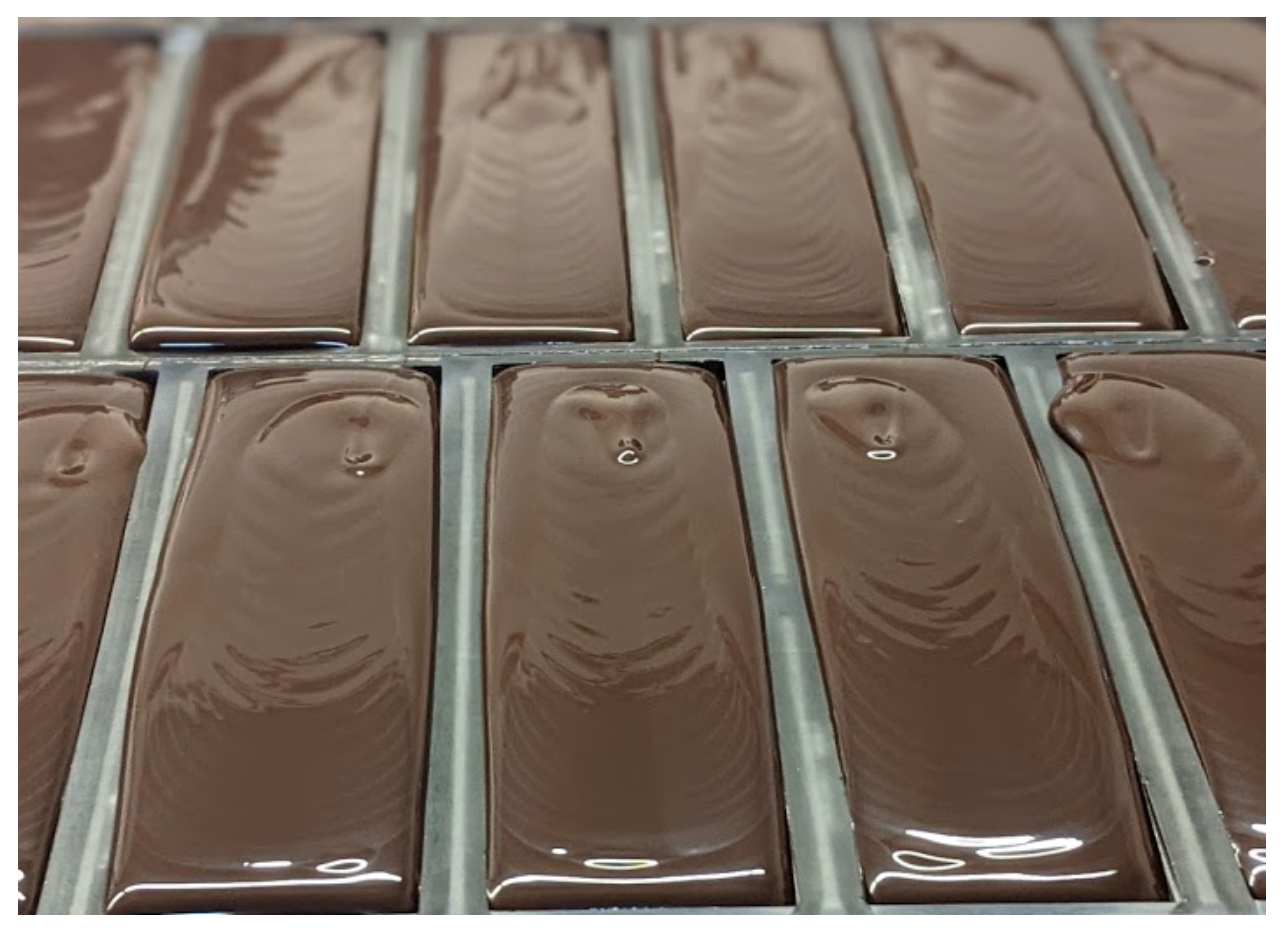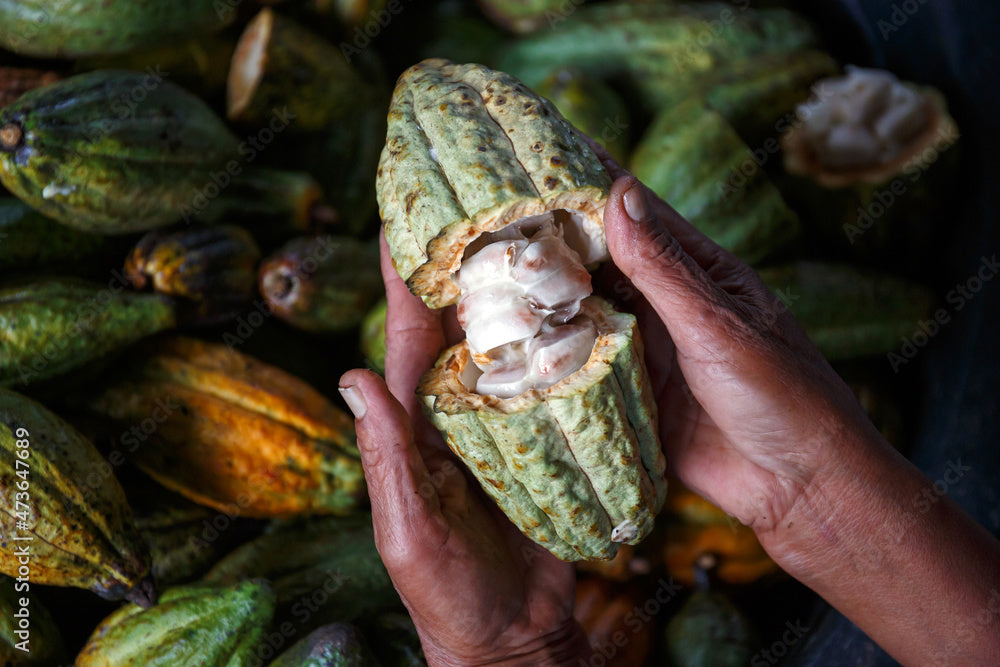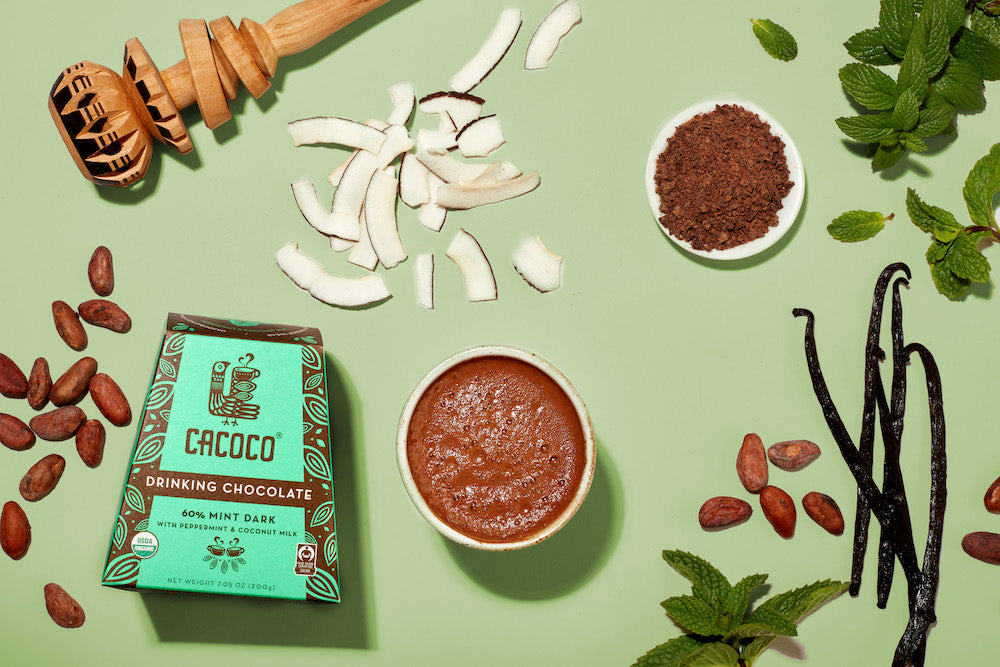
What’s Up With Heavy Metals in Chocolate? All About Prop 65
As a co-owner and founder of a chocolate company, this has been very concerning for me for many years.
Especially considering I feed chocolate to my family, including my 7-year-old daughter, and I am very concerned about sourcing the cleanest & most nutritious cacao possible for my customers.
I also have to label my chocolate with scary-sounding Prop 65 warnings and have friends with small businesses that were sued for not putting Prop 65 labels on their products.
My simple question was this, are the heavy metals in cacao and dark chocolate something I should worry about and what is my heavy metal load, being a heavy cacao consumer?

Here’s a Brief Explanation of Prop 65 and The Problem
Prop 65 was originally intended to be for water and its official name is the Safe Drinking Water and Toxic Enforcement Act of 1986. In 1986, California voters passed Proposition 65, which was a well-intentioned, but poorly-written law to help keep California residents safe from dangerous chemicals. But what started as a good idea and a list of 30 chemicals has ballooned to over 900 substances and created a huge problem with lawsuit abuse, extortion, misleading labels, and ineffective reform.
It is well documented that this law has been abused by exploitative, for-profit law firms and individuals who make millions of dollars in settlements, with little to no benefit for Californians.
Most Heavy Metals In Chocolate are From The Soil, Not From Processing
Cacao trees grow around the equator, in rich volcanic soil and the trees naturally absorb what is in the soil, including small amounts of cadmium. Virtually all dark chocolate has heavy metals present to some degree. One of the benefits of cacao is that it is also very high in iron, which is a heavy metal vital for health, especially for women and even more especially around menstruation when blood and iron are lost. I have personally never seen any cacao or dark chocolate that does not have heavy metals. This tells me that heavy metals have been naturally present in cacao for a very long time, and are not related to processing. Reputable chocolate processing machinery is mostly stainless steel, is extremely clean and contained.
That said, new industry research is showing the while cadmium is primarily absorbed from the soil, lead is often absorbed from the environment during the fermentation, drying and transport of cacao beans. Unfortunately leaded gasoline was used for nearly 80 years worldwide and some countries still use it, so it is highly present in our environment and is in many other foods as well. Recently there has also been an uptick in Prop 65 claims for companies that are selling fresh and dried fruits & vegetables. Due to lead being extremely common in the environment, it is absorbed by many fruits & vegetables from the soil, water and environment. There are simple techniques that can be used to reduce lead exposure in chocolate, such as drying cacao beans on raised platforms, as opposed to on the ground.
Years ago when I first started becoming aware of this issue of heavy metals being in cacao and other foods, I worked with a food scientist who was studying kale in California. He tested organic kale, non-organic kale, and kale from farms all over California. What he found was high levels of the toxic metal Thallium in ALL the kale he tested. Thallium is a soft metal, similar to lead, it is odorless, tasteless, and has a reputation for being used as a poison!
Arsenic is so common in California soil that the rice industry has an exemption in the prop 65 statute so that they do not have to have a prop 65 label for arsenic on their packaging.
I am not including this to scare you or to discourage you from eating kale, rice, fruit or vegetables. My point is to highlight the fact that heavy metals are in all kinds of foods we eat. Even in plants with the healthy aura of kale.
This leads me to believe that all different types of plants, trees, fruits, vegetables, nuts and seeds absorb different elements from the soil, including toxic ones.

[Fresh Cacao Pods, Esmeraldas Ecuador]
Uh Oh, I Eat A Lot of Chocolate!
I have been a very heavy cacao consumer for the last 15 years since I’ve been in the chocolate industry. I estimate I eat or drink at least 2 ounces of cacao or dark chocolate daily. That’s around 45 lbs per year and around 675 lbs over the last 15 years. Combine that with the fact that since 2019 I’ve been drinking hot drinking chocolate nearly every morning. I used to eat 99% dark Lindt chocolate bars when I was in college and ate way too much Halloween candy as a kid.
Basically, I’ve eaten A LOT of cacao in my life.
I was curious to take a heavy metal test, although I was also scared of what the results might be.

[Liquid dark chocolate being poured into molds, Coracao Chocolate Factory, Richmond CA.]
My Team and I Get Tested for Heavy Metals...
In Dec 2020, I decided to get a heavy metal blood analysis done and wanted a couple of the other heaviest cacao users in the company to get their blood levels tested as well, so we could compare results. These guys eat as much, if not more cacao than I do.
So we all got tested and I was shocked by the results...
We All Tested Normal?
All three of us were in the normal, healthy range for heavy metals. In fact, two of us, including myself were low in copper and it was recommended we eat more green vegetables and dark chocolate!
This Leads Me to Believe Heavy Metals in Chocolate and Possibly Other Foods Are Absorbed Differently...
The science and research around this is new, so this is just my opinion, but based on the test results for my team and me, I believe heavy metals are not absorbed or at least absorbed less efficiently when bound to plants, going through the digestive tract. These results were especially surprising to me as chocolate is a processed food, cacao is ground down for hours to be under 20 microns, so smooth you can’t feel any cacao particles on your tongue when chocolate melts in your mouth. These results were even more surprising to me, considering my team and I also consume large amounts of cacao as an easy-to-digest hot beverage!

[Stone grinding cacao in a stainless steel melanger, Richmond CA.]
Prop 65 is Important But Not Appropriate For Natural Foods or Disneyland
I think the intention of Prop 65 is noble, to keep water safe and to let people know when they are in danger from toxic substances. Though the fact that it is on nearly everything now, including Disneyland pretty much makes it meaningless. When it is ubiquitous, especially here in California, many people become numb to it and ignore it. For others, it creates confusion and fear. It also creates a subset of unethical “bounty hunter” lawyers that will test products for around $30, like chocolate, though it could be anything and if the results come back as being over Prop 65 limits, they file a lawsuit. Most companies, especially small businesses will settle for around $50,000 as it is cheaper than fighting a lawsuit. Some companies go out of business because they can’t afford to fight or even settle and some companies like Disneyland will put up a big sign letting you know you might get cancer and birth defects from going on their rides. Either way, it is a strain on many businesses and does not really benefit, educate or warn consumers in a helpful way. Especially with natural foods, where practically nothing can be done to remove heavy metals that naturally occur in soil and that are naturally absorbed by plants.


Claire Bennett
I'm Claire, a chocolate lover and artisan based in a small town where I run a tiny home kitchen dedicated to exploring everything chocolate. From single-origin dark bars to creamy ganache and handmade truffles, I find joy in working with all types of chocolate. I believe chocolate has a story, and I love bringing that story to life through humble, heartfelt creations.



Leave a comment
This site is protected by hCaptcha and the hCaptcha Privacy Policy and Terms of Service apply.